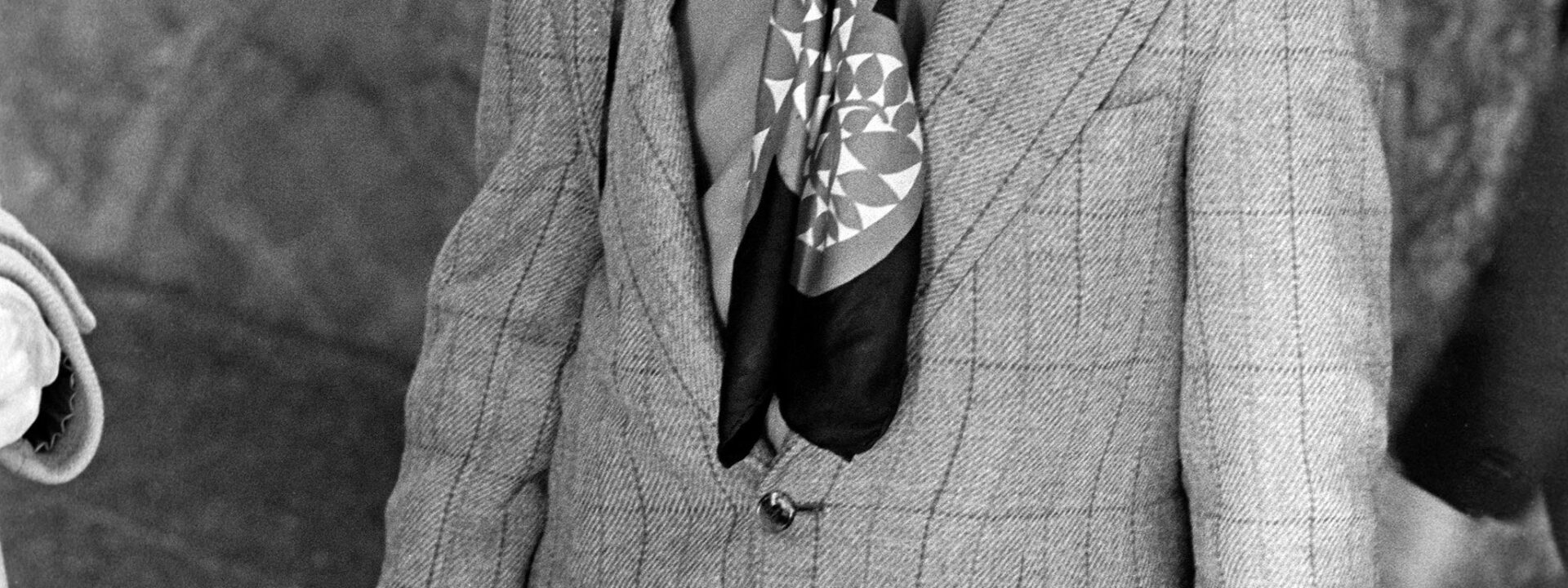A sharply tailored blazer, oversized sunglasses, a cigarette held like a punctuation mark—James Baldwin was a writer and thinker who knew the power of image. And he wasn’t alone. Throughout the 20th century, Black intellectuals and artists treated fashion not just as decoration but as a statement of being. Their clothing was deliberate, every choice rich with meaning.
The Metropolitan Museum of Art’s Costume Institute will explore this legacy in its spring 2025 exhibition, Superfine: Tailoring Black Style. Inspired by scholar Monica L. Miller’s 2009 book Slaves to Fashion: Black Dandyism and the Styling of Black Diasporic Identity, the show examines how Black individuals have used style to redefine perception. It highlights designers like Virgil Abloh and Grace Wales Bonner, as well as the everyday fashion of living rooms, lecture halls, and nightclub stages. While reshaping the language of Black life and art, these figures also crafted bold visual identities—through hats, gloves, heels, and tuxedos—that broadcast their ideas to the world.
W.E.B. Du Bois set the tone. In early 20th-century America, where Black masculinity was often distorted into caricature, Du Bois’s wardrobe was an act of defiance: gloves, a neatly trimmed beard, walking sticks that were more than functional. For him, dandyism wasn’t frivolous—it was proof. In his 1903 masterpiece The Souls of Black Folk, he described double consciousness, the struggle of being Black in a country that saw you through a veil. His clothing embodied that tension, turning theory into visible form. Every polished shoe and crisp pinstripe was a rebuttal to the stereotypes around him.
Zora Neale Hurston carried that spirit forward. Zadie Smith once wrote that she admired Hurston—whose 1934 essay Characteristics of Negro Expression influenced Superfine’s framework—for many reasons, not least her flair for hats. In a 2009 essay, Smith highlights one of Hurston’s most striking declarations:
> “When I set my hat at a certain angle and saunter down Seventh Avenue, Harlem City, feeling as snooty as the lions in front of the Forty-Second Street Library… Peggy Hopkins Joyce on the Boule Mich with her gorgeous raiment, stately carriage, knees knocking together in a most aristocratic manner, has nothing on me. The cosmic Zora emerges. I belong to no race nor time. I am the eternal feminine with its string of beads.”
That was Hurston in essence: born in the segregated South, educated in the North, yet refusing to be confined by either. She rejected both the stiff propriety of Harlem Renaissance elites and the clinical detachment of white anthropologists, opting instead for satin gowns, snakeskin shoes, fur stoles, and feathered caps. She turned selfhood into a spectacle.
A generation later, James Baldwin, like Hurston, wore his defiance—not his pain. Sunglasses. Scarves. Sharp-collared coats with clean lines. His wardrobe wasn’t lavish, but it was precise, each piece chosen like a carefully placed word.
He dressed as he wrote: with rhythm, and always in defiance of what the world refused to acknowledge. In New York, his three-piece suits echoed Harlem Renaissance refinement—structured shoulders, fine fabrics. Then, in Paris, he shed the weight. By the late 1940s, the rise of racial violence and McCarthyism’s persecution of LGBTQ+ people (the so-called Lavender Scare) made life dangerous for Baldwin as a Black queer man. So he left for Paris, a refuge for artists like Josephine Baker and Richard Wright. There, he sharpened his thoughts on race, power—James Baldwin found a sense of belonging and completed his first published novel, Go Tell It On the Mountain (1953), while also drafting Giovanni’s Room (1956) and writing essays for his 1955 collection Notes of a Native Son. His style evolved to reflect his intellectual bohemianism—minimalist trench coats and tailored suits that mirrored the sleek aesthetic of Paris’s Left Bank and the emerging designs of Pierre Cardin. Later, during his time in Istanbul in the 1960s, Baldwin embraced looser, flowing silhouettes, setting himself apart from both the militant uniforms of the Black Panthers and the psychedelic excess of the American counterculture.
Yet he never fully assimilated into European style. Traces of Harlem remained—a bold ring, a fitted turtleneck, his unmistakable posture. Baldwin’s fashion was deliberate: queer, cosmopolitan, and carefully controlled, a way of being seen without being entirely known.
Figures like W.E.B. Du Bois, Zora Neale Hurston, and Baldwin wove freedom into their clothing—not out of vanity, but as a form of vision. Revisiting their style isn’t nostalgia; it’s a lesson in how dressing while Black is an act of theory, of becoming, of staying alive.
Who carries that energy today? Prince did, for a time, in lace blouses and towering heels, daring others to dress their truth. His brilliance wasn’t just in extravagance but in making space for self-expression, treating fabric as language. Similarly, Iké Udé’s self-portraits craft a counter-history of Black elegance, while Ekow Eshun approaches style with scholarly precision. Solange Knowles embodies her visuals—chrome, cowrie shells, textiles—each choice intentional. Grace Wales Bonner doesn’t just design; she unearths stories, her garments essays in cotton and wool.
But few balanced beauty and burden like André Leon Talley, his capes grand as cathedrals, his words lush as velvet. His presence in fashion wasn’t just symbolic—it was earth-shaking.
This legacy isn’t finished. As scholar Monica Miller notes, Black dandyism has long been a way to reimagine identity and reclaim dignity. Over the past century, that defiance has taken shape in satin and suede, in cravats and cowries. What began as resistance has become a rich, enduring tradition.
